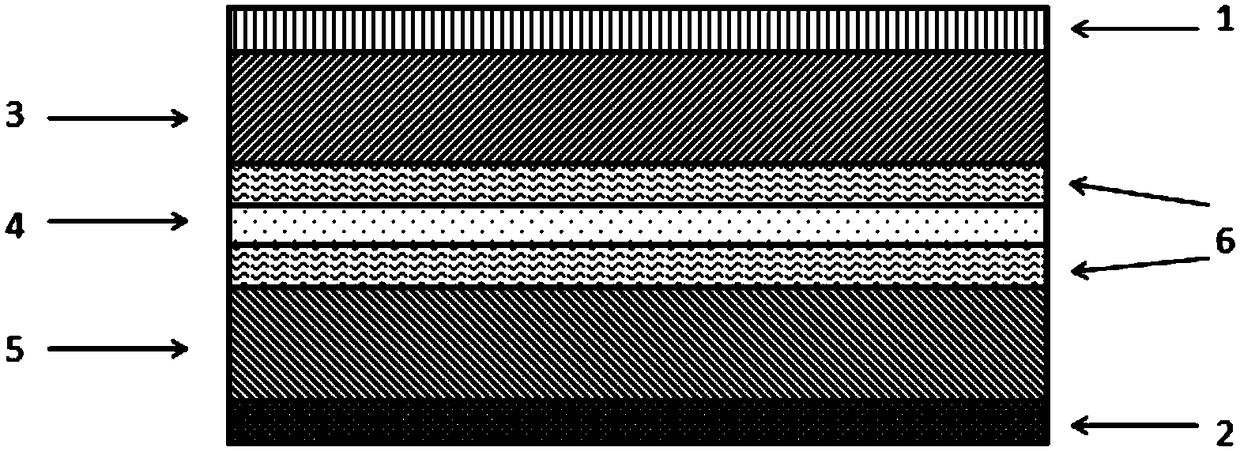Application of tellurium based material serving as negative electrode active material in sodium-based dual-ion cell, sodium-tellurium dual-ion cell and preparation method thereof
A negative electrode active material and dual-ion technology, applied in battery electrodes, secondary batteries, circuits, etc., can solve the problem of volume expansion and pulverization of tin-sodium alloys, burrs on the surface of tin foil piercing the diaphragm, and potential safety hazards in sodium batteries, etc. problems, to achieve the effect of good stability, adjustable shape, and small volume expansion
- Summary
- Abstract
- Description
- Claims
- Application Information
AI Technical Summary
Problems solved by technology
Method used
Image
Examples
Embodiment approach
[0155] As a preferred embodiment, the preparation method of sodium tellurium double ion battery comprises the following steps:
[0156] a) Preparing the negative electrode: mixing the active material of the negative electrode material, the conductive agent, the binder and the solvent to form a slurry; then uniformly coating the slurry on the surface of the negative electrode current collector, cutting it into pieces after drying, and obtaining a negative electrode of a required size;
[0157] b) Prepare the electrolyte: dissolve the sodium salt electrolyte in the corresponding non-aqueous solvent, and mix thoroughly to obtain the electrolyte;
[0158] c) Prepare the diaphragm: cut the diaphragm into the required size and dry it;
[0159] d) Preparing the positive electrode: mixing the positive electrode active material, the conductive agent, the binder and the solvent to form a slurry; then uniformly coating the slurry on the surface of the positive electrode current collector...
Embodiment 1
[0167] A sodium-tellurium double-ion battery includes a negative electrode, a diaphragm, an electrolyte and a positive electrode.
[0168] Preparation of negative electrode: Add 0.4g tellurium nanowires, 0.05g conductive carbon black, and 0.05g polyvinylidene fluoride into 2mL N-methylpyrrolidone solvent, grind thoroughly to obtain a uniform slurry; then evenly coat the slurry on copper foil The surface, as the negative electrode of the battery, was vacuum-dried at 80°C for 12h. Cut the electrode sheet obtained by drying into a disc with a diameter of 12 mm, compact it with a hydraulic press (10 MPa, 10 s), and place it in a glove box as a battery negative electrode for backup.
[0169] Preparation of the separator: the glass fiber paper was cut into discs with a diameter of 16 mm, dried and placed in a glove box as a separator for later use.
[0170] Preparation of electrolyte: Weigh 2g of sodium hexafluorophosphate in a glove box and add to 9mL ethylene carbonate: dimethyl ...
Embodiment 2-12
[0174] The preparation process of the sodium-tellurium double-ion battery of embodiment 2-12 and embodiment 1 is except that the active material used when preparing the negative electrode is different, and all other steps and materials used are the same, while the sodium-tellurium double-ion battery of embodiment 2-12 The energy storage performance of the ion battery was tested and compared with the performance of Example 1.
[0175] The battery test includes energy density, specific capacity and coulombic efficiency. The specific test methods are as follows:
[0176]Cycle charge and discharge: cycle charge and discharge are carried out on CT2001C-001 blue electric battery cycle test system, and the standard capacity of the electrode is tested by charging and discharging at a rate of 100mA / g, the specific capacity of the material = current * time / sample mass, the energy density of the material = specific capacity of the material * platform voltage of the battery, coulombic e...
PUM
 Login to View More
Login to View More Abstract
Description
Claims
Application Information
 Login to View More
Login to View More - R&D
- Intellectual Property
- Life Sciences
- Materials
- Tech Scout
- Unparalleled Data Quality
- Higher Quality Content
- 60% Fewer Hallucinations
Browse by: Latest US Patents, China's latest patents, Technical Efficacy Thesaurus, Application Domain, Technology Topic, Popular Technical Reports.
© 2025 PatSnap. All rights reserved.Legal|Privacy policy|Modern Slavery Act Transparency Statement|Sitemap|About US| Contact US: help@patsnap.com



